What happened when a Group of prominent chief investment officers from U.S. public and private pension funds, endowments, foundations and a health care system met for two hours to discuss the most compelling investment issues of the day? The nine CIOs, who hailed from across the asset owner spectrum, found they had a surprising number of challenges in common. Investing in hedge funds and other alternatives to traditional stocks and bonds was the No. 1 issue for the group, which also expressed concerns about currency manipulation and the effects of changing global demographics. A healthy debate over the merits of active versus passive investment management and the importance of finding the right managers also emerged as important themes.
Fresh from a night of celebration at New York’s Mandarin Oriental hotel, this year’s Money Masters winners gathered the next morning, May 20, at the Union League Club for Institutional Investor’s annual U.S. investor roundtable. After grabbing coffee, bagels and croissants, and posing for pictures, they took their places around the table. Denise Strack, CIO of the $6.5 billion Gordon and Betty Moore Foundation, kicked off the introductions. Strack, who has spent 14 years — the last eight as CIO — at the Palo Alto, California–based nonprofit, which was started by an Intel Corp. co-founder, directs a team of ten investment specialists. Previously, she headed the private equity portfolio at her alma mater, Stanford University.
Seated next to Strack was Lifetime Achievement winner Peter Gilbert, who retired last November from his position as CIO of Lehigh University in Bethlehem, Pennsylvania. Gilbert set up the school’s first investment office in 2007, as the endowment was approaching $1 billion, just in time to ride out the 2008–’09 global financial crisis. Before that he led the then-$34 billion Pennsylvania State Employees’ Retirement System for close to 15 years, after holding investment positions with the New York City Comptroller’s and Mayor’s Offices.
On Gilbert’s left was Scott Pittman, CIO of New York–based Mount Sinai Health System’s $1.6 billion investment office since January 2009. The Baylor University grad previously worked for five years in the investment office of his alma mater, where he also taught finance and microeconomics.
Next to Pittman was Kathleen Gallagher, CIO at Dearborn, Michigan–based Ford Motor Co.; a 30-year Ford veteran, she oversees $65 billion in global defined benefit assets and $14 billion in defined contribution assets. Gallagher took the job in 2007 after serving as financial controller of engine operations and global risk management co-director. “We’ve spent a lot of time using our investment strategy to secure the retirement benefits for our half million participants and at the same time insulate the parent from any continuing noncore risk,” she notes.
At one end of the table sat the two public pension CIOs: Elizabeth (Liza) Crisafi of the $6.7 billion San Diego City Employees’ Retirement System and Ashbel Williams Jr., who is chief executive of the $175 billion Florida State Board of Administration in Tallahassee. Crisafi, who started at SDCERS just before the financial crisis, took over as CIO in 2009, revamping the entire portfolio, adding alternatives and firing close to a dozen underperforming managers. Williams, who first worked in his current role back in the 1990s, returned in 2008 after a decade in asset management in New York City. After his return he added hedge funds and launched a private equity portfolio.
“We have a million beneficiaries, and I take honor in helping those who have given their lives to public service,” says Williams, pointing out that the pension plan is 90 percent funded.
Meet the Panelists Click below to view profiles.
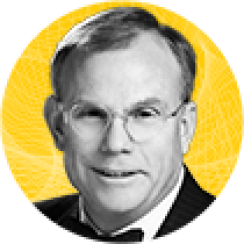
| Ashbel Williams Jr. CEO, Florida State Board of Administration |
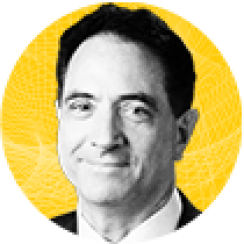
| Charles Van Vleet Assistant Treasurer and CIO, Textron |

| Denise Strack CIO, Gordon and Betty Moore Foundation |
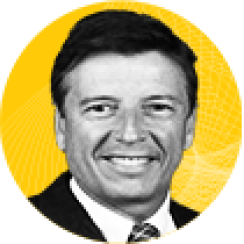
| John Alexander Jr. CIO, Clemson University |

| Kathleen Gallagher CIO, Benefit Plans, Ford Motor Co. |
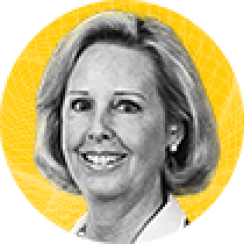
| Elizabeth (Liza) Crisafi CIO, San Diego City Employees' Retirement System |

| Peter Gilbert Former CIO, Lehigh University Endowment Fund |

| Sally Staley CIO, Case Western Reserve University |
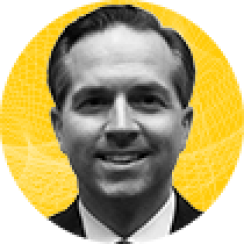
| Scott Pittman CIO, Mount Sinai Health System |
Alexander, who likes to say he is the entire investment staff at Clemson, arrived on campus in 1990 as a finance professor with a Ph.D. from Florida State University. He began developing investment models in 1999 and assumed the CIO role in 2005. He runs a strategic asset allocation that is more than 70 percent index funds and exchange-traded funds (ETFs).
Since the global financial crisis, C-suite investment executives have had to battle to deliver the fund performance essential to providing pensions, grants and academic scholarships for their institutions. With interest rates close to zero and central banks around the world unwilling to raise them, these investors have learned to look far and wide for new ideas. All of the roundtable participants have been aided by their diverse investment experiences.
Senior Writers Frances Denmark and Julie Segal facilitated the roundtable discussion. An edited version follows.
Institutional Investor: What role do alternative investments play for you in a world of zero interest rates?
Elizabeth (Liza) Crisafi: About five years ago we made a decision to increase our exposure to alternatives. When I came on board in 2008, [SDCERS] had 11 percent in real estate and that was it. Now we have 10 percent allocated to private equity, 3 percent to infrastructure and an opportunistic bucket that can stretch to 8 percent of the total portfolio; it currently includes opportunistic real estate and global credit mandates. Starting in 2009 the timing of our private equity program couldn’t have been better.
John Alexander Jr.: To us [at Clemson] the more provocative question is the hedge fund space. We’re indexers and we’re keenly cost-conscious. We’re running most of our public equity portfolio at [a cost of] about 18 basis points. We don’t want to pay high fees for high correlations. I think certain sectors of the hedge fund space are going to start to drive toward commoditization, and whenever you have something that starts to drive toward commoditization, then that calls for lowering of cost.
We’re trying to encourage our hedge fund consultant [Cambridge Associates] to be a little more tactical possibly in their positioning across the different hedge fund sectors. Further, in those areas that are liquidity-driven with higher correlations, consider replication to save on cost. And in those areas that are lower correlation and skill-driven, be willing to pay the higher fees.
Scott Pittman: I think your comments are well placed. I fear that hedge funds have already moved into the commoditization framework. Whether the number is 10,000, 11,000 or 15,000, you lose count after so many thousands. There are certain strategies that may be even more challenged than others given the crowded trades and some of the quantitative, or even smart-beta, systematic-type funds that drive a lot of the momentum and take away some of the short opportunities.
I agree with all these points, but we’ve got a large hedge fund portfolio. We have managers within that portfolio that we are paying higher fees as a result of the simple fact of what hedge fund managers can achieve. If you’re going to use hedge funds in your portfolio, you have to have concentration with managers. There are managers within the industry that justify their fees. Investors create an additional layer of problems in that they take the good managers, put them into a big portfolio of other actively managed funds and re-create the market with active fees.
Alexander: You bring up a good point because we modeled it out last year. Wouldn’t it be wonderful if we could all buy top quartile all the time?
Kathleen Gallagher: But we do. We’re all above median. [Laughter]
Alexander: Speaking at a recent conference [with a lot of hedge funds], I said rather than paying 2 plus 20 on a 10 percent long-short equity position, you’d be better off buying a 4 percent absolute-return position at the hedge fund fees and 6 percent in the S&P 500 at 10 basis points. Then, of course, before I got chased out of the building, I had to immediately point out that all long-short managers in the audience were, of course, top quartile, and my comment only applied to the average.
Denise Strack: We don’t look at hedge funds as one single opportunity. There are so many different kinds. I think a lot of what you’re talking about does apply to your long-short, generic [fund manager], who is really long-biased with a few shorts in there. But we have, like you, invested a pretty large allocation to multistrategy managers with an absolute-return mind-set. We look at net returns. So the fees are high, but the net returns have paid off.
The other part that we’ve kind of chuckled at is, we’re now running after the end of a pretty long bull market and hedge funds often do fall out of favor in that time period. While there’s a lot of public talk and chatter around getting rid of your hedge fund portfolio, this is not the time for us to do it at all.
Charles Van Vleet: I think we’re ready to stop calling hedge funds an asset class. It’s really just the vehicle, because some hedge funds are net long-short, some are net long, some are commodity, some are rates. It’s just a vehicle.
Peter Gilbert: I see hedge funds as a fee structure, and you can use them in so many different ways. You can try to use that talent if you look for risk premiums that you can get at a very low cost, where you don’t need to pay 2 and 20. You have to be flexible, and the environment changes all the time where you can find different strategies, different trade claims, whatever it is. You want to find managers that recognize that and then can take advantage of it and help you along the way if you have a small staff like we had.
Pittman: We have equity-focused, credit-focused, macro and real assets, so hedge funds are actually across the entire portfolio. There’s no actual hedge fund asset allocation category.
Van Vleet: I serve on the board of the MFA, the Managed Funds Association, and they know that this industry is under attack. Somehow it’s become the poster child for excess and Wall Street greed, and it is not an asset class; it’s simply a vehicle. It may be the only vehicle that we can get certain things. It may be too expensive or not. I’m really judging by net returns. I don’t get obsessed about fees. Net return is what I care about.
But I’m also trying to break my committee from thinking about hedge funds as an asset class. I ask, please give me an allocation that you want to equity. Let me decide whether it should be public or private, U.S. or international, whether it’s going to be liquid or illiquid. You might want to give me a liquidity budget. But again, if I decide I’m going to access equity through a hedge fund versus private equity or through public or through a derivative, I’m trying to elevate the conversation to a factor space, not a product space.
Sally Staley: I do agree hedge funds are not an asset class, but we organize the portfolio with a separate bucket, or a target percentage, for hedge funds. We’ve tried over the years sprinkling hedge funds throughout the other true asset classes but find it really plays havoc with benchmarking. It works for you in some market conditions. It doesn’t work in others. So I prefer keeping them segregated or classified in their own segment of the portfolio.
But they have a job to do. Their job is to be the risk rudder. At the same time, they produce absolute return — at least, don’t lose money. It gets us as close as possible toward our expected return, or our needed return, of around 8 percent. To do that we ask what’s the nature of the net return stream that the product produces? We don’t care whether it’s a long-short fund or a credit fund or a macro fund.
For the past couple of years, we’ve been finding funds we wouldn’t normally have come across in our usual travels — smaller, less known or in more niche-y sectors. We are modeling those return streams into a portfolio that’s got ten or 12 names in it that together, and properly proportioned, give us the highest possible Sharpe ratio.
Strack: We’ve defined the target of that bucket as equitylike returns with half the volatility. A couple of more bull market years, and it will be a challenge.
Denise, tell us about the Moore Foundation’s venture capital program.
Strack: You run the numbers over and over again and the average venture capital fund makes the Nasdaq returns with twice the risk, so it’s the opposite of what you want. But I have Gordon [Moore] as my founder. That’s been very fortunate for us, so we leverage that as much as we can. We’re up to 8 or 9 percent in venture, and we’re running at about 1,000 basis points above the average fund. On hedge funds we were really, really good. I hope we can stay really, really good.
How has the manager selection process changed with the commoditization of hedge funds?
Gallagher: We all may think of this very differently. We’re starting to reverse engineer them all and think about the simplest questions: “How do I make money here? What is it you do? What is your skill? What is your edge?” Those were all the first principles of investing.
There are some tremendous hedge fund managers who may be poorly described as hedge fund managers; they’re just great investors. We should have them. But we should understand them better and maybe have bigger allocations to them so that we can reap the benefits rather than overdiversifying into big portfolios that defeat our own goals.
How do you find top managers?
Gallagher: We’ve begun to do more truly opportunistically. It starts with the notion of needing a return stream to pay bills. Our opportunistic investments may be an example. If you think in very simple first principles of investing, you can find all sorts of incredibly gifted investors who are very active in small, niche spaces, many of them created in the past eight years because of all the disruption and disintermediation of the big banks. We are all liquidity providers, and there is scant liquidity for a lot of really great ideas, many of which are small or don’t last very long.
We’ve been fortunate to have found, by being willing to do the work, places where you can achieve terrific returns, cash yields, in the longer-dated-than-absolute-return hedge fund space but by no means as illiquid as private equity or infrastructure. For those of us who have cash flows that are near-term and went through a period where private equity duration might have been infinity in 2008 and ’09, the ability to get immediately invested in many cases — to have a cash yield, a cash component, of a very attractive yield; to have maybe a five-year tenure, a seven-year tenure — is very attractive. But you have to accept the fact that you may only be able to do this for a very few years, then you’ll need to move on.
Van Vleet: I agree. It’s the most exciting space because banks — commercial and merchant banks — are disintermediated. We are better lenders than banks for two reasons. One is that our loans are one-to-one loans, not levered loans. Second, there isn’t a term structure mismatch.
Gallagher: Absolutely.
Van Vleet: The economy is stronger if we are the providers of that three- to eight-year capital rather than a bank. It’s actually very exciting, but the transition is rough. Because banks have to post more capital, they have exited the business of buying and holding trade claims, and we can be in it. Banks used to be in the business of factoring. They would buy a company’s future receivables and give the company the money now. Banks no longer want to hold that factoring book. We should be there to do that. Litigation claims are becoming institutionalized: Somebody wins a big lawsuit and the money doesn’t come for two years; they want to cash out now. Banks and law firms used to be the only providers. Now we can participate in litigation claims. We are shadow bankers, and I think it’s working out great.
Gallagher: It’s been interesting, as a long-term participant, watching deal flow move from traditional channels to other players, who are now part of the deal flow and can be an agent at facilitating our ability to provide liquidity with whoever needs it. There is far less credit formation in the economy than there ever was. If we can be part of that, I think that’s a terrific outcome.
Ashbel Williams Jr.: We have relationships with a lot of opportunistic credit-oriented funds, including liquid and less liquid structures. They’re all over this, and I think more people are coming in.
A diversified portfolio of third-party credit shops gets you exposure across cap focus, industry focus, geographic focus, and looks at it holistically. You can get unlevered, high-single-digit returns on a book like that if it’s properly underwritten and if you’re using the right credit partners.
Pittman: Credit-related opportunities are definitely the growing opportunity today, especially as bank capital has pulled back and markets appear to be later-cycle. It’s not just traditional credit strategies but rather using a credit perspective as a lens to view opportunities across all assets in lending, real estate, royalties and sectors such as health care. We’re spending more time to be better positioned in targeted areas that we find compelling in the current return environment.
What other opportunities are you looking at now?
Crisafi: We work with two advisers who wanted to put together a pie chart of venture, buyouts, mezzanine allocations. We said: “Throw out the pie chart. We want to be completely opportunistic. We want to avoid the J curve.” We invested in a lot of private equity secondaries and co-investments. Our IRR [internal rate of return] is 18 percent. Our alternatives are what’s holding up now, when our public markets portfolio is not doing a whole lot. It’s been a bit of a struggle to get the trustees comfortable with that. We had a number of educational sessions.
In our infrastructure sleeve we’re invested in a desalinization plant in Carlsbad [California] that’s going well, but I want to figure out how to be more invested in water. I think that’s going to be a commodity, and I think it’s going to be in short supply.
Staley: Another place we’ve been looking for opportunity is in the equity allocation, which we treat as one global equity allocation, looking more granularly into the many smaller markets, emerging markets, that have index funds that track the whole market, or some part of it or sector. Index funds and ETFs make those smaller markets investable. There’s a place for both passive and active investing.
We can find return streams in unusual places that have really attractive characteristics and incorporate them into our global equity portfolio. We don’t spend a lot of time with fundamental research on a country or opinions on the direction of the equity market. We see a potential for return in a place where we don’t have active management or we can’t get there or we just don’t want to start and potentially stop an active management relationship. There is a burgeoning role for index funds and ETFs that can take you into the further corners of the world.
Where does everyone stand in the active versus passive management debate?
Alexander: Sally brings up a good point. I think that the more finely passive management indexing slices things, that erodes a significant portion of the competitive advantage of active management. I can buy individual countries hedged or unhedged, and domestically we can select among market capitalization and sectors. That increases our ability to take concentrated positions in the portfolio. We find that the finer they slice the indexes, the more effective our internal modeling becomes and takes away some of the competitive advantage of active management.
Van Vleet: You’re not really passive, John. You’re taking the active role.
Alexander: If you’re going to use a strategic indexed approach, it has to be based on a strong global marcroeconomic view that your investment committee can understand and accept. We haven’t held a single bit of small-cap equity since ’09. Consultants tend to have a seven- to ten-year view; that’s less than helpful when it comes to achieving returns in the current fiscal year.
Staley: Following on what John just said about the short term and long term, right now while you’re managing a perpetual pool of capital, there’s a big time mismatch there, especially when we’re judged so closely on the quarter or the fiscal year or three-year numbers. What we do to look good in that short time frame may be very different from what you would choose to do if you had 20 years for it to work out. Yet the money should be there long after I leave and my successor leaves and so forth. I think that’s really a clash in the portfolios we manage today, in the type of decisions we tend to make.
In terms of active versus passive, we’re looking for alpha in so many places. You may be using passive or indexed return streams, but as you pull those into a portfolio and combine them, you’re seeking to add alpha in that way. It’s another technique for getting to a return and beating a benchmark.
Strack: I’ve had the exact opposite experience on the active versuspassive decision in smaller markets and especially in the emerging markets. We made a decision to take a fairly passive emerging-markets portfolio — this was six years ago — and migrate toward country-specific
active managers. The goal was to find the best we could and not worry too much about the geographic or cap-size movement; just let these guys make that decision. We’ve moved 75 percent of the emerging-markets portfolio into active management, and over the past five years we’ve had 600 basis points of alpha over the index.
But when you do that, the big fear is, is Russia going to turn or I’m going to have too much Brazil or I’m going to have too much China or whatever that is. We’ve used a completion index to take that fear away. I do believe in some of those markets; if you can get someone on the ground that knows exactly what’s going on day to day, you can make huge alpha in those areas. But it also requires somebody to travel to these areas.
Gilbert: What I find really interesting about this conversation is that there’s no one way of doing this, that there are a lot of different approaches you can take to get alpha or to meet your funding requirements. It depends on what you think are your skills and the way you approach it. One is to have passive instruments that you handle actively and you make active bets with them, or you can find managers with unique skills. You may start off with a passive approach, and then you come across managers that have skill. They’re hard to find, but you can build out a portfolio like that.
Alexander: Well, Peter, you’re just talking about the efficiency ladder, right? We all know the less efficient the market, the more active management pays off.
Van Vleet: And emerging markets are a perfect example.
Alexander: Yes, absolutely.
Strack: Same thing with venture. That’s where we get our big alpha.
Gilbert: When I was at a big public pension fund in New York City, we tended to use a lot of passive exposure in broad equity areas. Then when I was at Pennsylvania, we early on discovered hedge funds and then we used a portable-alpha program. It was fantastic while it lasted. Just before I left there, in 2007, our biggest concern was that correlations were increasing between the hedge fund alpha and the equity beta.
At that point, the last thing we did before I left the Pennsylvania state pension fund to go to Lehigh was take off a third of the equitized exposure. The correlation between the active and passive components was the biggest strategy risk. The passive strategies and portable-alpha made sense in a very large state pension fund, but the use of these things changes over time. When I came to Lehigh, we were able to get active managers who did really well, who were smaller and could focus on much more niche areas. A lot of our long-only strategies came from hedge fund managers that were starting these strategies. We were able to access hedge fund talent with lower fees.
It seems like everybody here still is a big believer in active management.
Gallagher: It depends.
Gilbert: If you can find the talent, which you cannot necessarily find. You have to be very, very selective, and you have to do a lot of research to really understand what they’re doing. Otherwise you’re paying a lot of money for the market.
Williams: To me several things come out of this. First of all, the fundamentals matter, and if you fall prey to the peril of pigeonholing things and looking at products in the wrappers they’re handed to you in, that’s a loser’s game. But if you understand how to look through the product wrappings and understand what the underlying exposures are, reconcile that with your own governance and your own expertise, and go back to the basics of what works, you can come up with some appealing things.
I like cooking analogies. If you’re a person who is insecure about your cooking knowledge and you therefore follow a recipe very specifically without understanding variance in the inputs that are available to you based on what’s decent in the market on a given day, you’re going to have issues. If you understand the underlying chemistry and physics and you can tune things on the fly to match what works, you’ll be fine and you’ll always produce edible stuff.
Gallagher: And when the season changes, you change your ingredients.
Williams: Think of the blessings we have around this table. Several people have made comments about our long-term nature — that’s unbelievably powerful — unlike a lot of our commercial counterparts in the asset management business, and I’ve been there. I get this. We’re not struggling to window-dress at quarter’s end or year’s end. Quite the opposite. There’s nothing I like more than a major upheaval where I can end somebody’s pain for a fee that’s going to serve my beneficiaries for the next 20 years. That’s what we do. We write checks when everybody else is running and dying for liquidity, which is great. It’s a very powerful asset, so I think we’ve got a lot that we can do, opportunistically.
How important are the asset managers to total portfolio return?
Strack: Everything. We’re not market timers, and we can’t predict the future. We rarely overweight, underweight, et cetera. But what we can do really well is pick good managers. I’d rather have a good manager in a bad market than a bad manager in a good market in many ways, because eventually the markets switch and your bad manager in a bad market is really, really painful.
Pittman: It is very much about the manager selection and not just about active management. You’re not timing markets, but you’re just using your managers as an additional resource to figure out where opportunities are that you might be able to add to at the portfolio level where it appears opportunities will persist for a longer period of time.
Williams: In many cases it is a client servicing relationship. In others it’s more of what I would call a partner relationship. I prefer those.
What I’ve found is there are circumstances in which you can share perspectives with people and find ways to do things together that are mutually beneficial, even if it’s something as simple as using a partner that has depth in a certain area that you lack. It’s a firm or an individual in whom you have trust and confidence in their expertise, using them to validate another strategy you’re thinking about doing. You may not even be doing it together. If you’re doing it together, so much the better.
Gallagher: I have a couple of comments on managers. There’s so much to gain by a fruitful, long-term relationship with the best of the best out there, and certainly we’ve benefited from it at Ford. We think of them as partners and co-thinkers. History is a benefit in many of these relationships. They know you well. You know them well. Your interests are aligned. You have reasonably high confidence of a shared alignment and success in the future. All of that is terrific. The caveats that go along with that are, our responsibilities around continuous due diligence because these firms do change. Even individual gifted investors become less gifted or have a personal change in circumstances. You just can’t ever rest on what you thought you knew about either a firm, a team or an individual.
We’re spending a lot of time on intergenerational transfer of the equity in the private firms. Founders need to be monetized. It needs to be a healthy transition. As many times as there can be happy endings, there can be very unhappy endings. Certainly, a big piece of our role is to prevent those unhappy endings — to see them coming before they blow up in our face.
It will always be a commercial relationship. Being a fiduciary comes first and friendship comes second. One of the best pieces of advice when I moved into this role — and I tell every new member of my team — is, “Just remember, you will never be so good-looking, so intelligent and so funny as when you were on the client side of the investment management industry.”
What is your biggest concern as you look toward the future?
Van Vleet: We are entering into years of currency wars and currency turmoil. There are only three levers that can be pulled to manage an economic cycle. The first one, that’s easiest to pull, is the monetary. The second, which is more difficult to pull, is called the fiscal, and the third one is painted red with a big stripe in it that says, “Please, only in case of emergency pull this lever.” We are now looking at pulling that lever in several different countries, and that’s a very big, gross, ugly lever — that currency lever — because it’s like trying to hit a fly with a sledgehammer.
Alexander: I would take the opposite side of the same coin. I think currency is strongly related to commodity supercycles. So in addition to currency, I’m looking hard at what’s going to happen to oil hedges that are coming off this summer.
Staley: My biggest concern is how we’re going to make the type of return that easily supports our spending needs as an endowment and, in turn, supports the university for all of the things that higher ed is under the spotlight for: the cost of higher education, scholarships and financial aid. Congress may want us to spend more when we’re not even achieving a return that supports what we spend now. That would raise the return hurdle or add to spending and make the job all the more difficult.
Williams: What worries me is the intersection of two very fundamental problems that pose powerful headwinds for financial markets and therefore investment returns. The first is global demographics. Every developed industrialized power is either in neutral or reverse, or close to it. The U.S. has got very mildly positive demographics, which sets us apart from Europe and Japan. The only places in the world that have birthrates that meaningfully exceed replacement rates are the Middle East and Africa. The problems with that are that if you don’t have strong economies to absorb young people, it’s incredibly destabilizing.
There’s also a vacuum right now in public policy leadership. These are times in which we need visionary leadership at national and international levels to reach across those divides and demographics in the industrialized, developed “have” countries and the less developed, less organized, less industrialized “have not” countries to make it work.
Crisafi: The thing that concerns me most is the low-return environment, that this is going to be the second year where we’re not hitting our 7 to 8 percent return. That’s concerning to me because we have a $2 billion unfunded liability. We’ve made so much progress on the funding ratio. When I started, it was around 68 percent, and now we’re up to 78 percent. We’re fortunate in that the City of San Diego is on a payment program and they’ve been paying that. We’re supposed to be fully funded in 15 years. My concern is if we are in an extended period of low returns, that pain just gets bigger and bigger for the plan sponsor.
Pittman: We see large developed and emerging economies all pursuing similar policies. Everyone is on one side, and there are few counterbalances in the global economy. Global debt has increased, and the levers of growth have been pulled as asset valuations have inflated. Risks are increasing with currencies, policies of protectionism and social frustrations.
Gilbert: Beyond the continuing low-growth environment, if you get inflation, you may get stagflation, which is very difficult to deal with. The traditional view of fixed income and bonds being a safer investment will not work. We will need a rethinking of what the liabilities are and how people are going to be able to replace their income when defined contribution plans have been very difficult for people to use to accumulate retirement assets because of the poor investment selection there. The Social Security system is now a one-legged stool. It’s not going to support people.
Strack: We have a global portfolio of grants that are trying to make long-term impact, positive impact, for us and the world. In order to do that, they need to maintain purchasing power. How do you do that in a low-rate environment where interest rates are virtually zero and valuations seem a bit stretched?
Also, because our spending and our investments are very global, I fear getting challenged by the unpredictable nature of currency. How do I invest with the uncertainty of something that has so much policy underneath it? I hold my breath more than anything else. •
Get more on investors.
Follow Frances Denmark (@francesdenmark) and Julie Segal (@julie_segal) on Twitter.






